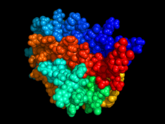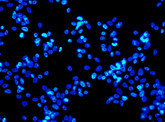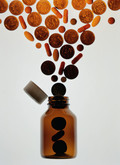Biosimilars/Research
Infliximab biosimilar comparable to Remicade
South Korean biotechnology company Celltrion presented results of its extended trials for its biosimilar infliximab candidate Remsima (CT-P13) at the European League Against Rheumatism (EULAR) 2013 Conference, which was held in Madrid, Spain on 12–15 June 2013.
Erythropoietin biosimilars in bone marrow transplantation and stem cell donation
Combination therapy with granulocyte colony-stimulating factor (G-CSF) and erythropoietin (EPO) has been used with the aim of accelerating the recovery of red blood cells following autologous bone marrow transplantation [1]. Previous studies have shown, however, that this practice has no significant effect on erythroid recovery and transfusional requirements.
Robust data for biosimilar trastuzumab programmes presented
Celltrion and Pfizer have presented robust data from their respective biosimilar trastuzumab programmes at the ASCO (American Society of Clinical Oncology) 2013 Annual Meeting held on 31 May to 4 June 2013.
Use of G-CSF biosimilars for reduction of fever
The American Society of Hematology, the British Society of Haematology, the European Society of Hematology and the European Group of Bone Marrow Transplantation all recommend the use of granulocyte colony-stimulating factor (G-CSF) after transplant in order to reduce the time to neutrophil recovery and the number of days with fever.
Positive post-marketing data for biosimilar epoetin
Injectable generics specialist, Hospira, presented results from a post-marketing study of the company’s European biosimilar epoetin (Retacrit) on 3 June 2013 at the 48th Annual Meeting of the American Society of Clinical Oncology (ASCO) held in Chicago, USA.
Use of G-CSF biosimilars for stem cell mobilization in autologous transplantation
The first biosimilar granulocyte colony-stimulating factor (G-CSF) was licensed by EMA in 2008, and there are currently six biosimilar G-CSF products licensed for use in the EU [1]. All of these biosimilars are also approved for haematopoietic stem cell transplantation.
Biopharmaceutical products in Iran
Iran will become a leader in biotechnology products (especially copied biopharmaceuticals [1]) in Asia over the next three years, according to a review by Mahboudi et al. [2].
Use of G-CSF biosimilars for stem cell mobilization in healthy donors
Granulocyte colony-stimulating factor (G-CSF) can be used to mobilize peripheral blood stem cells (PBSCs) in healthy donors. Over the last 10 years, the procedure has become the preferred option for donors compared to the donation of bone marrow.
Saving money in the European healthcare system with biosimilars
Biotechnology-derived medicines are increasingly popular for treating a range of conditions from cancer to autoimmunity, and yet they are among the most expensive healthcare products owing to their manufacture using live cell cultures. As healthcare providers become increasingly concerned about rising costs, interest is turning to the idea of substituting reference biological drugs with cheaper but similar biological products, or biosimilars, after patents expire on reference products. The use of biosimilars has the potential to reduce healthcare expenditure, particularly for long-term treatments, which incur high annual treatment costs.
Development of biosimilars for rheumatology
In 2012, worldwide sales for the top three selling tumour necrosis factor (TNF) inhibitors reached US$20 billion. These biological treatments for arthritis are costing patients between US$10,000–US$30,000 per year making the need for lower cost biosimilars clear [1].












